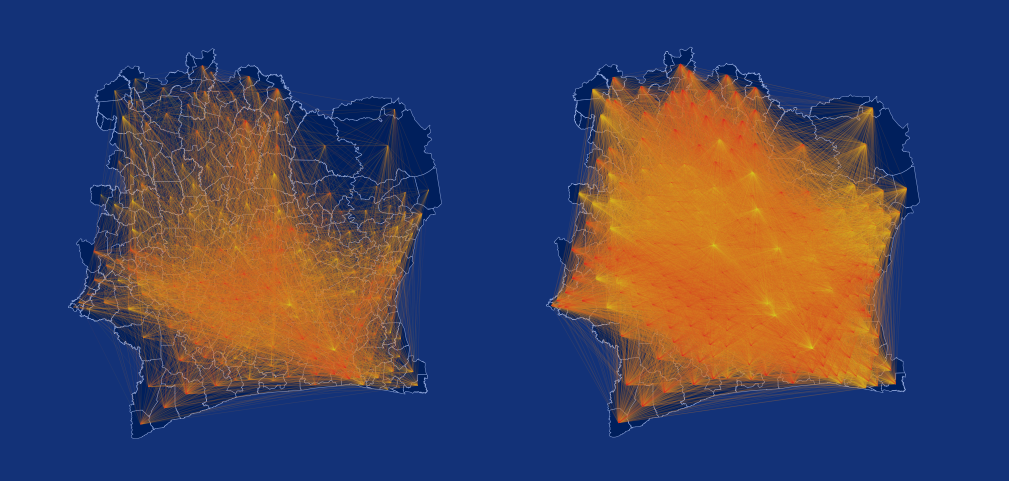Exploiting Cellular Data for Disease Containment and Information Campaigns Strategies in Country-Wide Epidemics
Antonio Lima, Manlio De Domenico, Veljko Pejovic, Mirco Musolesi
Third International Conference on the Analysis of Mobile Phone Datasets (NETMOB'13). Boston, USA. May 2013.
Human mobility is one of the key factors at the basis of the spreading of diseases in a population. Containment strategies are usually devised on movement scenarios based on coarse-grained assumptions. Mobility phone data provide a unique opportunity for building models and defining strategies based on very precise information about the movement of people in a region or in a country. Another very important aspect is the underlying social structure of a population, which might play a fundamental role in devising information campaigns to promote vaccination and preventive measures, especially in countries with a strong family (or tribal) structure.
In this paper we analyze a large-scale dataset describing the mobility and the call patterns of a large number of individuals in Ivory Coast. We present a model that describes how diseases spread across the country by exploiting mobility patterns of people extracted from the available data. Then, we simulate several epidemics scenarios and we evaluate mechanisms to contain the epidemic spreading of diseases, based on the information about people mobility and social ties, also gathered from the phone call data. More specifically, we find that restricting mobility does not delay the occurrence of an endemic state and that an information campaign based on one-to-one phone conversations among members of social groups might be an effective countermeasure.
